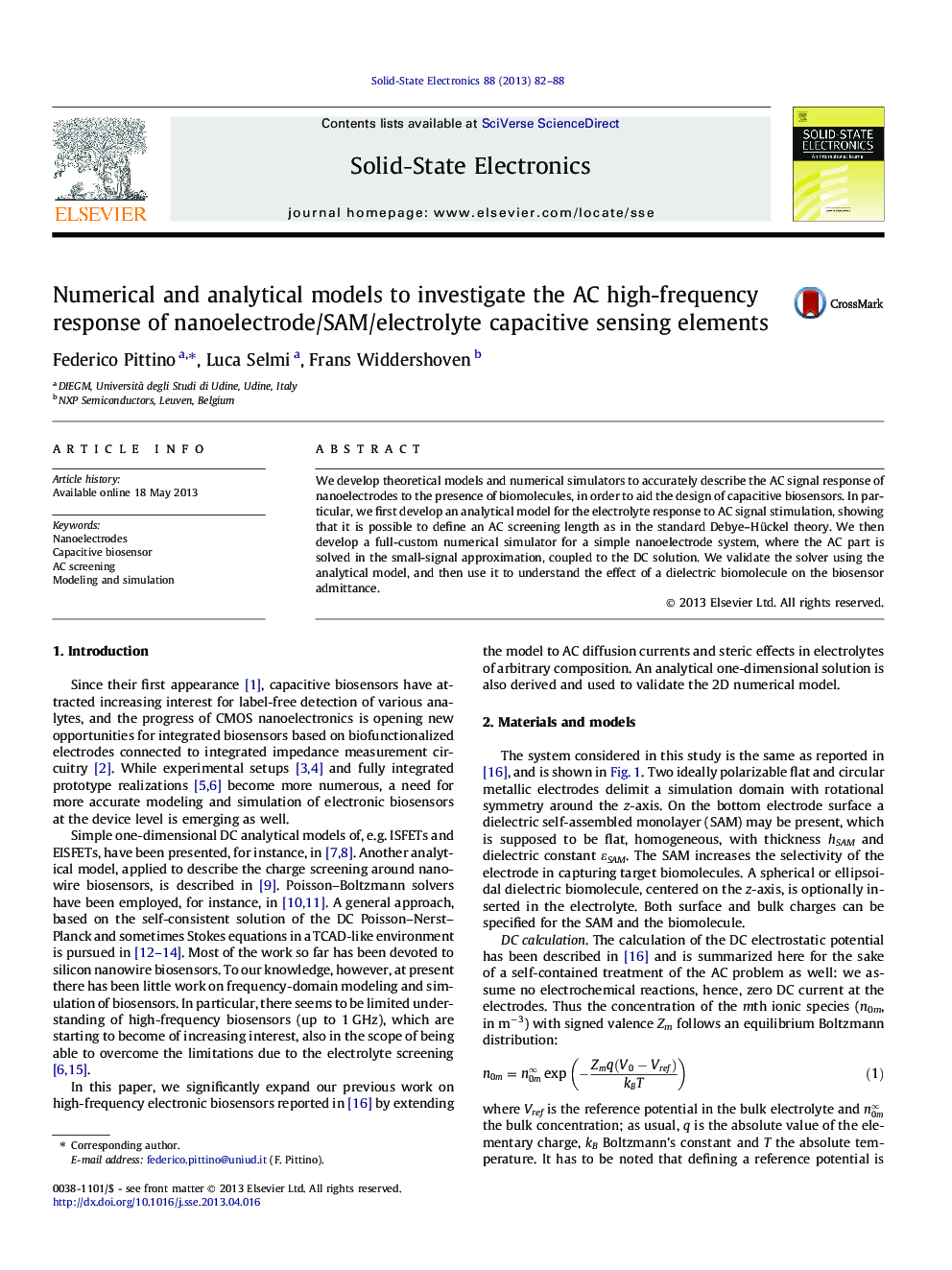| Article ID | Journal | Published Year | Pages | File Type |
|---|---|---|---|---|
| 748159 | Solid-State Electronics | 2013 | 7 Pages |
•DC and AC solver for biomolecules immersed in an electrolyte between electrodes.•1D analytical model describing the electrolyte response to AC signals.•At high frequencies, the change in the nanoelectrode capacitance tends to a constant.•This constant is independent of the salt concentration.•This constant is weakly affected by the nanoparticle charge or position.
We develop theoretical models and numerical simulators to accurately describe the AC signal response of nanoelectrodes to the presence of biomolecules, in order to aid the design of capacitive biosensors. In particular, we first develop an analytical model for the electrolyte response to AC signal stimulation, showing that it is possible to define an AC screening length as in the standard Debye–Hückel theory. We then develop a full-custom numerical simulator for a simple nanoelectrode system, where the AC part is solved in the small-signal approximation, coupled to the DC solution. We validate the solver using the analytical model, and then use it to understand the effect of a dielectric biomolecule on the biosensor admittance.
